September/October 2014
Church Bells & Chickens
We Finish Year Five with a Return to Northern France
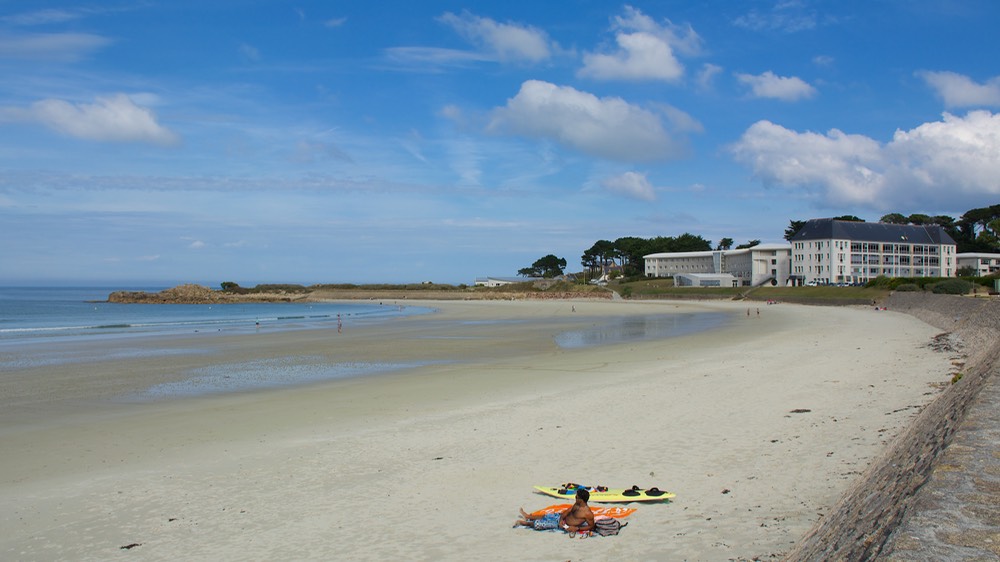
Crossing the English Channel into Brittany was easy; adapting to being back in France was even easier. We love the ringing of the church bells in France and Italy and other Catholic countries. It’s like the call to prayer in Muslim countries; somehow it just sets a special tone for being in that country. And suddenly we could hear roosters in the morning and see chickens squawking about in the yards from time to time. Why don’t we see chickens in England? Anyway, there’s a relaxed comfortableness about France that we always find very appealing and welcoming.
The only tough part about being back was that the sun refused to come up at a logical time. All of France is an hour ahead of England, time-wise, even though the northwestern area is due south and not east at all. This makes perfect sense when you look at a map of Europe, but for us witless wanderers if the sun is coming up at 7:00 in London, it’s not showing its lovely face until 8:00 in Paris. Even worse, Brittany is considerably west of London, so the sun wasn’t rising in Roscoff until 8:30. Son-of-a-gun! It was suddenly almost impossible to get Rick out of bed in time to get anything done before noon; or at least so it seemed. Kathy is a clock person while Rick maintains that we shouldn’t even have the things anymore and should just wake up when the sun comes out. These are the problems we world travelers face all the time. Such a tough life, huh!
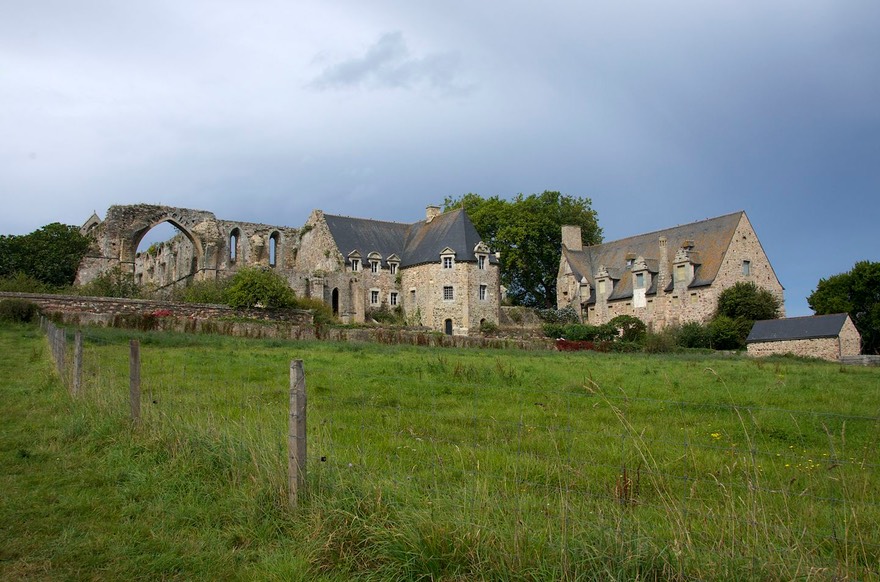
We made our way across the remaining bits of Brittany we hadn’t seen in the spring, cruising along the northern coast for a bit, and settling one night in the charming town of Tréguier, right at a spot where the Le Guindy and Le Jaundy rivers join. The trees were turning orange and red, the sun was shining, and it was very autumnal. At that spot along the river we were joined by vehicles from Switzerland, Germany, Belgium, Great Britain, The Netherlands – as well as from France of course – it was a very international gathering.
Whenever we’re in France we like to check out the abbeys and cathedrals, and the Brittany-Normandy area has its share. We paused for awhile at the very nice Abbaye de Beauport, which was a charming ruin, sitting right on the edge of the Channel. The grounds were wild and somewhat unkempt, adding to the charm, and there were weird rock formations off the coast to enjoy as well. We chose to not pay the fee to go inside, but enjoyed the exterior views. A good choice for a visit.
The car clubs of France are ever-present, and we woke up on Sunday morning, in Loudéac, parked right next to the local group, who were waiting for critical mass before setting out on their day’s ride. They were appreciative of our interest, and posed nicely for us, including the fellow who owned an ancient Cadillac called Paco the Cuban Taxi.
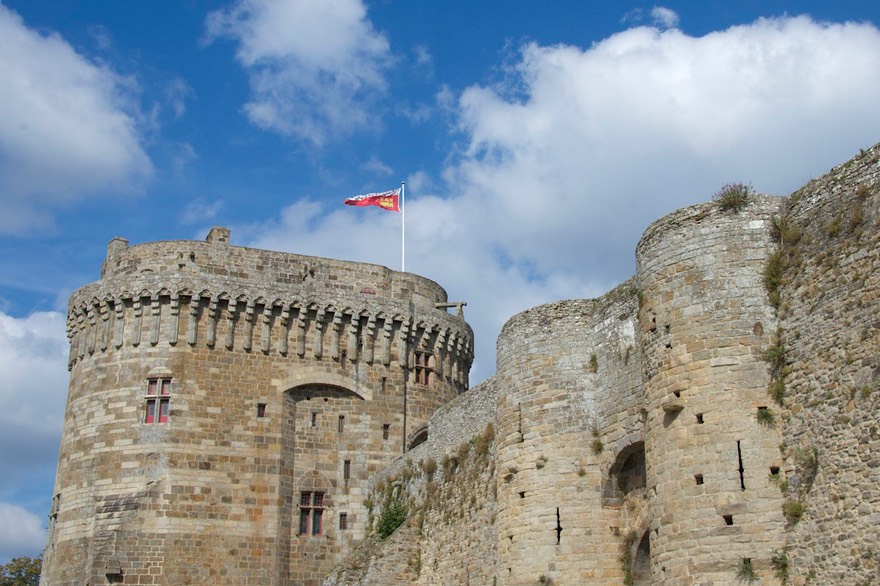
The next morning found us in the medieval city of Dinan, which was very quiet on a Monday (we understand it’s a very popular spot on the weekends). Surprisingly, although we had intended to park down by the port, we were able to drive right up through an entry in the fortified city walls and park just about wherever we wanted. We had a very nice wander, enjoying the old half-timbered houses leaning at various angles and clambering around the city’s fortifications, and then moseyed on.
We were actually headed for Normandy by now, a destination we’d been looking forward to for ages. To get there, we were going to pass right by Le Mont St Michel, long on my list of must-sees. We’ve seen an awful lot of medieval fortified hill towns in Europe, so getting out onto the island wasn’t the point – but getting close enough to get a good look was our hope. Well, foiled yet again! You used to be able to park overnight near the causeway that goes out into the water, but no longer. Now all that’s available is a parking lot (€12.60 for 24 hours) that allows you to use the shuttle bus that takes you across the causeway. The “guardian” told us there were no other options for motorhomes. So we muttered at her, trekked on down the road a piece, and joined other folks who had pulled off at a layby where we were able to hike out to a grassy area closer to the water’s edge and get a pretty straight-on view (it was, sadly, quite hazy and the murk made for lousy souvenir photos).
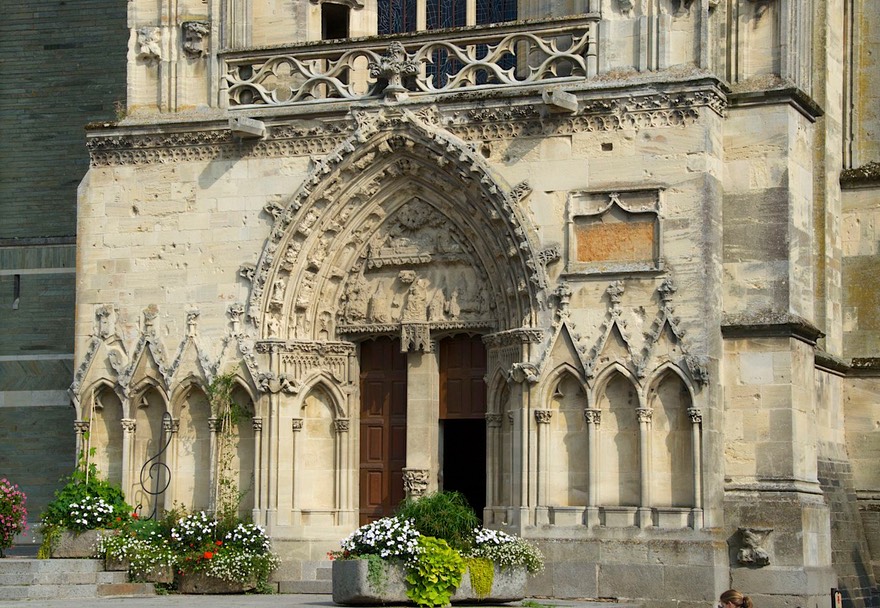
I found out later that apparently motorhomes can park in that lot for free for a whole one-half hour; typical. So, sadly, we must add Mont St Michel to the growing list of places whose ever increasing popularity has transformed them into less desirable spots to visit than they once were.
But on to Normandy! Our first stop was at St-Lô, famous as a frequent answer in crossword puzzles and called the “Capital of the Ruins” in honor of the devastation visited upon the town during the war. We were able to get lots of information on the entire area from the small but helpful tourist office, and had a chance to get a good look at the old town, atop a fortified hill above the rest of the city. It was pretty spectacular. The ancient cathedral had been badly bombed during the invasion, and there were many old pictures of the damaged building on display. The reconstruction has been very tastefully done; parts have been made to look as they had before they were damaged, but an entire section has been left structurally rebuilt but without decorative elements. It eloquently shows what was destroyed.
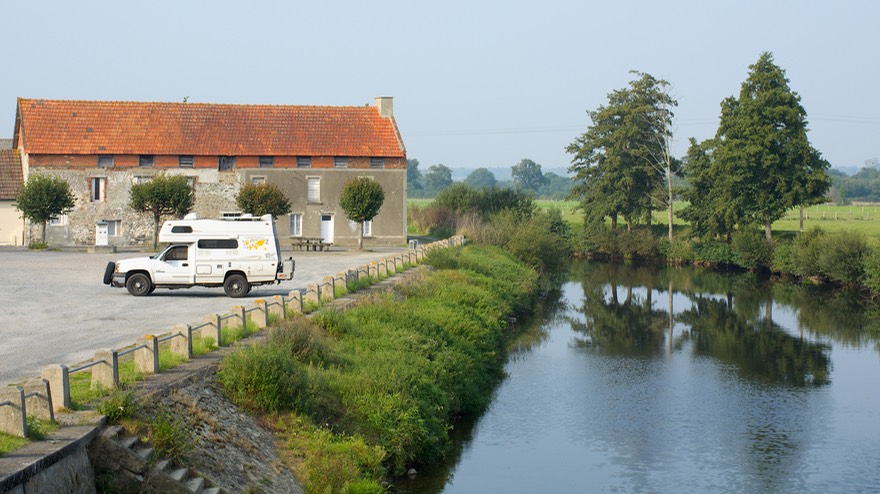
We spent the next few days wandering the Normandy area, using the small village of St-Fromond as a quiet base to come back to each evening. The village itself had figured in the landing aftermath, while the Allies were heading away from the coast to beat the bushes for Germans. We parked beside a small canal whose bridge had been important in the fighting; the Germans partly destroyed it but then it was rebuilt by the Allies on June 9. The village, along with every single town in Normandy, was filled with French and American and Canadian and British flags. It was all quite stirring, and a pleasure to see. We have commented before on the feeling of sincere gratitude still expressed by the French for the liberation of their country in both world wars. It isn’t tourist-oriented at all, but comes across as true feelings of gratitude and appreciation even after all the years that have passed.
Many of the sites we visited were located along the coast and just inland, where the D-Day invasion began. A number of the sites had been initially located in or around actual German bunkers left over after the battle. Those still in operation decades after their opening have been expanded of course, but they continue to be located almost right on the beach. We had read that the entire Normandy area could be considered one huge Open-Air Museum and we certainly concur. One interesting thing we’d never thought about is that, not surprisingly, D-Day is called J-Jour in French. Sounds funny, but makes perfect sense.
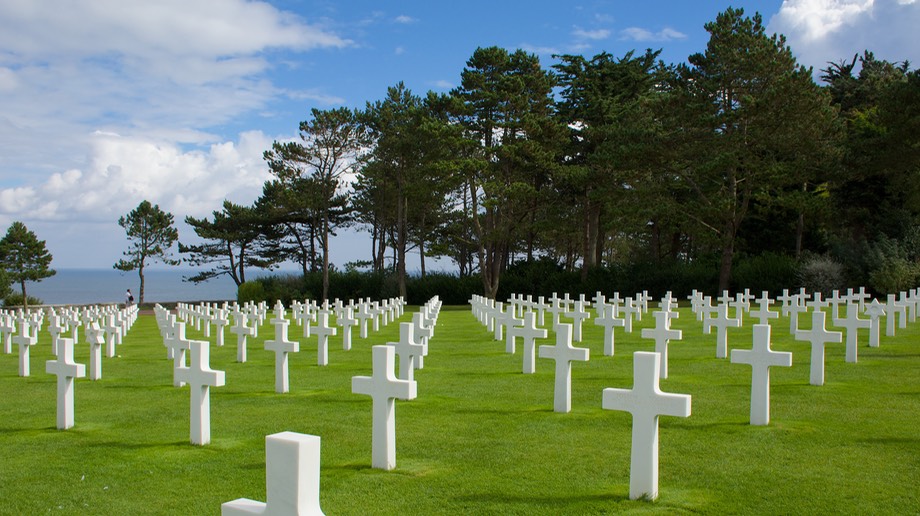
We began at the American Cemetery and Visitor Center overlooking Omaha Beach near Colleville-sur-Mer. This is a beautiful location with a terrific visitor center featuring primarily video and photographic displays to tell the story of the invasion. Everything is extremely tasteful and well done and the cemetery itself is beautifully laid out.
A bit west from there is Pointe du Hoc, a significant point of land where German artillery could fire on both the Omaha and Utah beaches. The task of taking out this artillery was given to the US 2nd Rangers and a new visitor center, together with display boards seen as you walk along the cliffs, tells the story. A film featuring recollections by survivors was quite interesting.
The brochure we had picked up listed more than forty D-Day sites that can be visited throughout Normandy. We knew we couldn’t do justice to them all so we needed to pick out a few to make up our own Normandy experience.
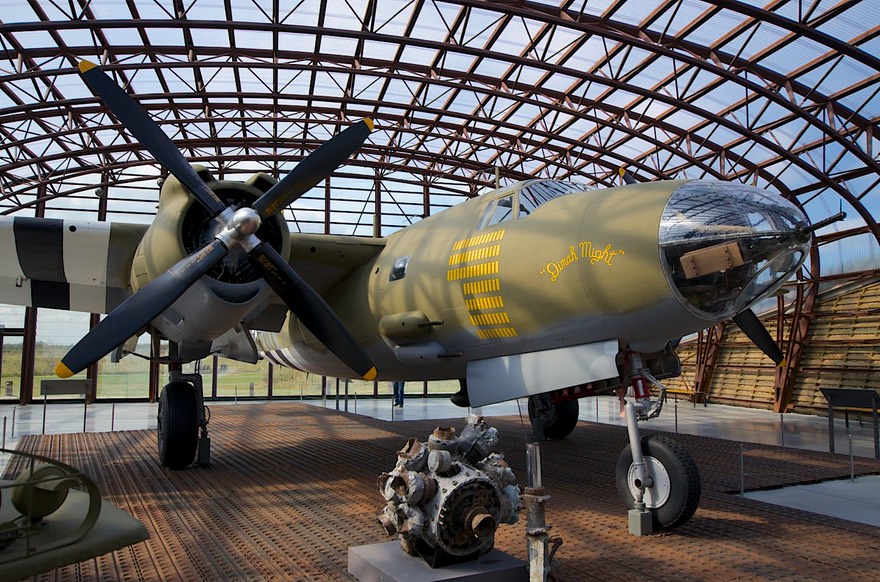
One that looked really interesting was at the Museé du Débarquement at Utah Beach. This turned out to be a really good visit, with lots to see, a very good film, excellent information, modern displays and a recently added B-26 airplane on long-term loan from the French National Aircraft Museum at Le Bourget. This is one of the most attractive and also most successful bombers of WWII and Rick was pleased to be able to see this recently restored example.
There are several German installations still visible along the coast and we chose the artillery battery at Longues-sur-Mer for a visit. The installation consists of four concrete bunkers still housing the original 150mm guns set in a pretty spot on a cliff overlooking the water. There’s not a lot there anymore, but the site does give a glimpse of what it may have been like to wake up and see the allied armada spread across the horizon on D-Day morning. These guns were ultimately destroyed on D-Day in a running battle with British warships off shore.
We finished off our Normandy experience with a visit to the Caen Memorial. This is a large museum with seemingly endless displays of information not only on the landings, but going back to the end of WWI to explore the causes of WWII and then extending throughout the cold war. It includes an extensive section on the Holocaust that contains some horrendous film of atrocities. This is an all-day event with tons of info and several movies to add to the experience. The films showed some amazing footage of the war and particularly resistance activities that we had never seen before. Enormously expensive, but worth it.
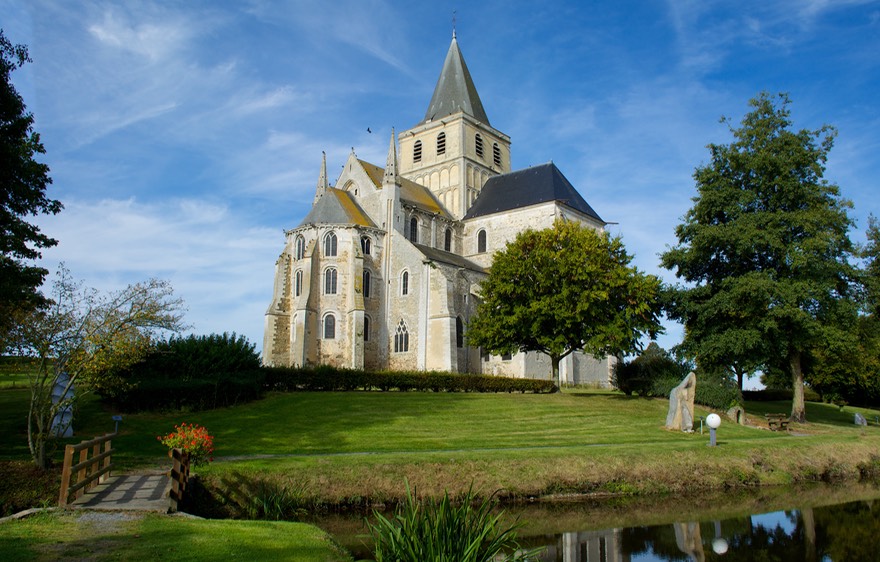
In between all these Invasion experiences, we stopped in Cerisy-La-Forêt to see the abbey there. The structure is used for retreats, and a more perfect spot would be difficult to find; set in a rural village, beside a pond, it was exquisite. We stopped on a Sunday morning, and couldn’t see the inside of the church, but we wandered the grounds and really enjoyed it. The weather continued to be hazy but pleasant during the day, although quite chilly at night – down into the mid-40’s, and sunrise coming later and later.
We’d moved east to visit Caen, so had to backtrack to spend some time in Bayeux. Now Bayeux is well known for its tapestry, and we wanted to see it. And Good Grief! It was amazing. Completed in 1077, just eleven years after the Norman Invasion of England which it depicts, it’s quite beyond belief. William the Conqueror himself attended unveiling. In recent years it has been housed so that you can see it really well; it unfolds horizontally along a curved wall and you can look closely at all 70 meters (230 feet). Know a secret? It’s not a tapestry at all, but a series of pieces of embroidered cloth all joined together. So now you know. Well, obviously we were blown away by the whole experience, helped considerably by the included and well-done audio guide. You could stay as long as you wished, and go around and around, seeing it several times, so we really enjoyed ourselves. Sadly, we were not allowed to take pictures.
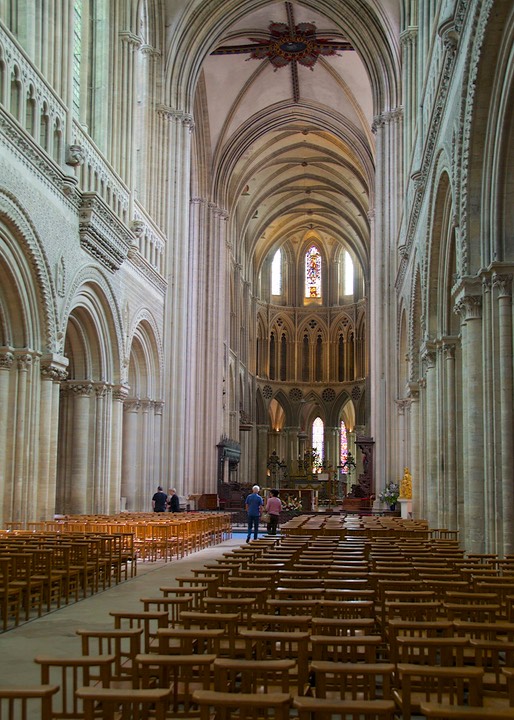
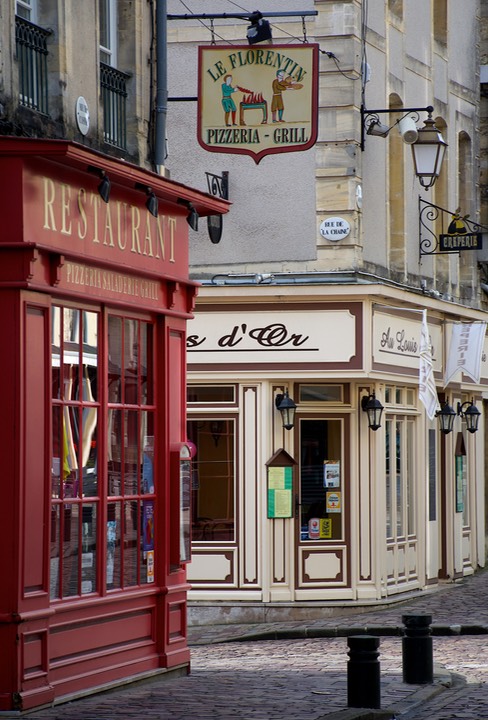
We also spent a few hours seeing the rest of the city. Bayeux is a very nice place, one of our favorites in northern France (and very friendly to motorhomes). It has a very nice sense of itself, is a real working class city as opposed to simply a touristy spot, and has lots to offer. Badly treated by the war (the “tapestry” was removed for safekeeping before the invasion), it has recovered and we recommend it very much. The cathedral is quite extraordinary with a lovely crypt area that once again dates back to William the Conqueror, there are monuments to De Gaulle and Eisenhower, and much more. Oh, and it was here that we discovered beignets – sure am glad that didn’t happen a few years earlier!
We made one last stop before leaving the Normandy area, at the only Polish cemetery established after the war; it’s located in D’Urville-Langanneries. The Polish leader of the government in exile in London formed the 1st Armored Polish Division in 1942, and during the Normandy campaign it was aligned with the Canadians. They suffered heavy losses during the action, and their dead, wounded and missing are honored here. It’s a nice experience and we were able to spend the night in the parking area.
Mostly finished with WWII for this year (stay tuned for one more experience) we moved east toward Rouen. We still were seeing lots of corn in the fields, and now sugar beets are being harvested, but there was more and more fallow acreage (hectarage???). In the backyards there were still plenty of apples on the trees, although none were on offer on the roadside.
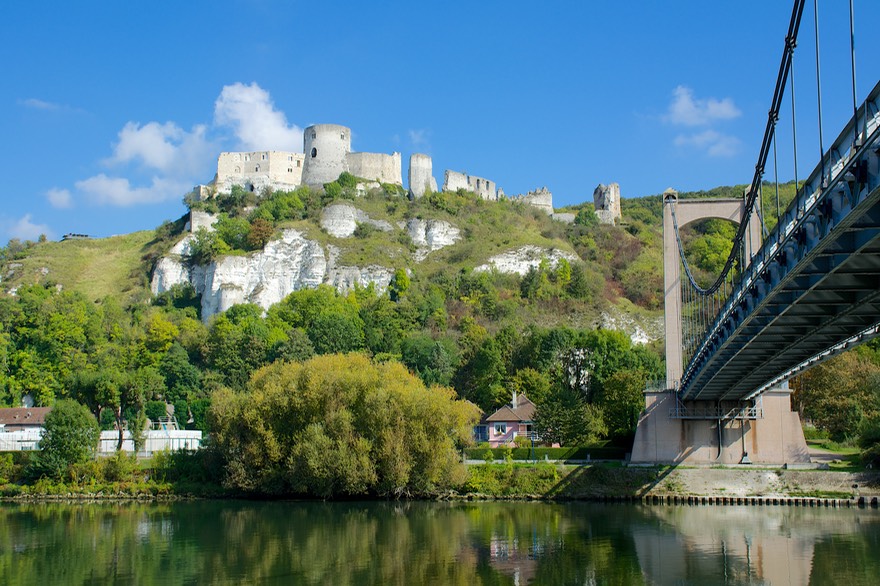
Rouen lies along the Seine, as that long and important river makes its way from Paris to the sea at Le Havre. The entire course of the river in this area is both historic and lovely. It’s littered with castles and abbeys and lovely countryside. The river itself is full of lazy bends (boucles) with pretty towns and church steeples galore. It’s quite a nice area. We wandered our way toward the huge city, stopping to see the Chateau de Ricard Coeur de Lion, whose well fortified ruins sit high on a bluff overlooking a riverbend. It was built in 1196 but destroyed by Henri IV in 1603; now that’s historic! Its location, and the chalk of the local earth, make for a dramatic picture. It sits above a charming town, too, Les Andelys. We saw small cruising boats along the river here; I suspect it’s popular to go between Paris and the ocean in this manner; nifty.
We had anticipated Rouen and its cathedral with great pleasure, but it turned into a disaster for us. No massive trauma, as we’d seen many a French cathedral city by now, but our problem was simply that we could not find a place to park, and hadn’t planned our visit with this in mind. We should have stayed at a town a ways out and found a train or bus, but hadn’t gotten organized in that manner. We spent a long time futzing about, but all the parking was underground, we didn’t trust the street parking which we did find – a mile or so away from the city center -- and even the Park & Ride options used parking structures. So we bagged the plan and kept moving.
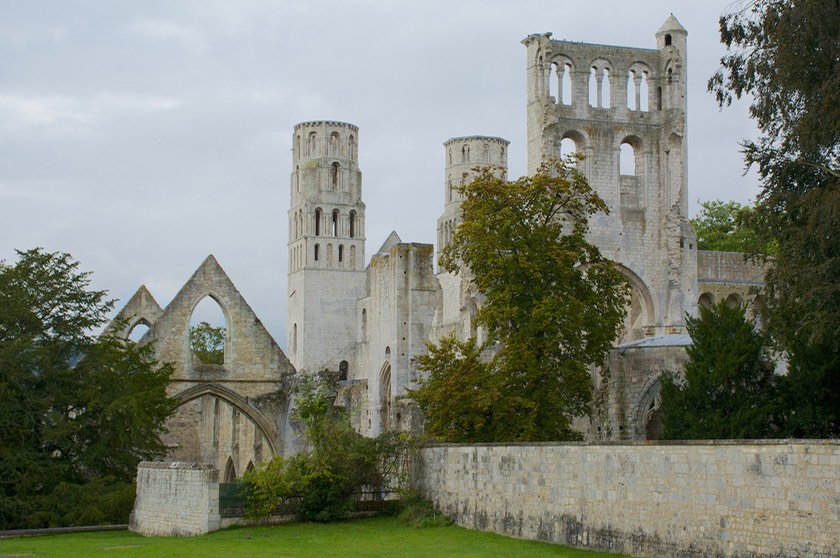
We didn’t go far, just to the charming and splendid village of Jumièges, home of the Abbaye de Jumièges. We spent two days there, regrouping after the Rouen fiasco, and really enjoyed it. There was fog off the river in the mornings, but as each day went by it became increasingly pleasant. The village is very nice, with two boulangeries, a couple of cafes and a small mairie/post office building. I loved wandering around. And then there’s the abbey, a lovely set of ruins. It’s quite romantic, in a park setting, and has an amazing history. Get this: founded in 654 AD by St Philibert, burned down by the Vikings in 841, rebuilt and burned again during the Revolution; the remaining ruins date from the 11th century. And: William the Conqueror attended its re-consecration in 1067. There’s been no attempt to restore the abbey, instead to stabilize and maintain. All kinds of famous people have visited it over the centuries, and declared it best of the best; I concur.
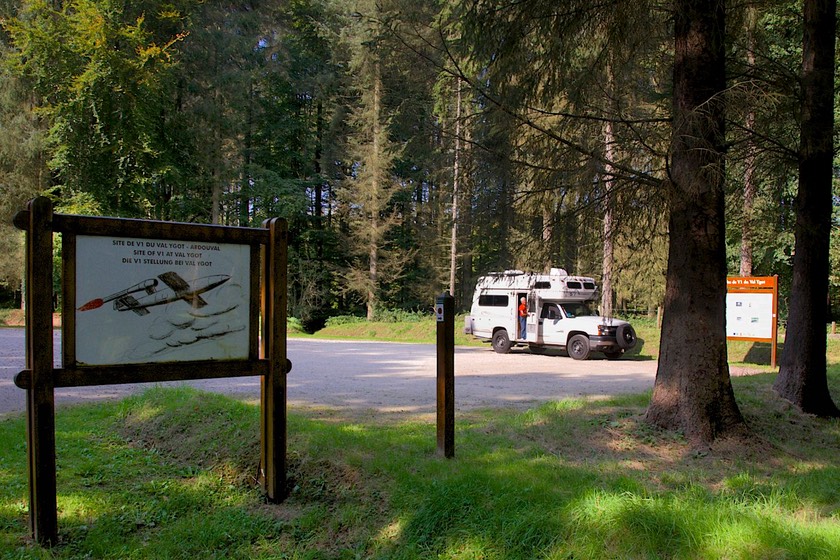
Amiens was our last big planned destination in France. On our way we made a small detour to visit that one last stop on the World War II front. Not too far from the coast at Dieppe, there is a small forest that has within its environs one of the 400 or so V-1 rocket launching pads that the Germans used to cause such trouble during the last months of the war. Near the village of Ardouval is Le Val Ygot, a complex of thirteen of the original concrete buildings along with a launch ramp with a decommissioned V-1 sitting on top looking for all the world like it was about to be fired off at London. The setting in the deep forest was extraordinary and we found the entire experience very interesting.
On a warm, sunny but hazy, Saturday morning we started off for Amiens in our trusty Tiger that never complains and always takes us where we want to go. Amiens is about as big as Rouen, but this time we had a plan. We had a general description of the location of a parking lot that was motorhome-friendly. Rick used a stylus to poke at Emily, giving her a target – and, amazingly, we ended up in precisely the right spot. Too cool. We had lots of company, friendly folks who gave us (unnecessary) directions to the mighty cathedral, off we went, and a good time was had by all. It was a great visit; Amiens has a very nice historic area. And, serendipitously, there was a very nice fresh market underway nearby; I scored some lovely peaches: in October! Way cool.
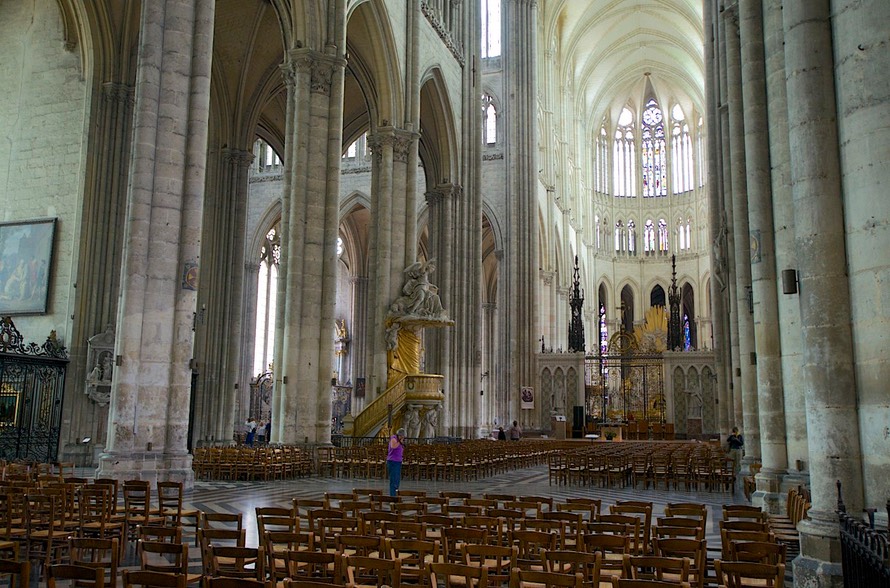
On Sunday morning, we had a date with our favorite French family, whom we had first encountered about six years ago in Argentina. We met in Péronne, not far from Amiens. The city houses an excellent World War I museum on the Battle of the Somme that we planned to visit. We got there early, and went in search of fresh bread. At the boulangerie, I spent a little time talking with an elderly gentleman and helping him make his way back to his car with his purchases. He was really appreciative, and I was enjoying conversing with him in French. Suddenly, he turned to me and said, “I hesitated to let you know that I spoke English because you speak French so very well – parfait – excellent.” Do you have any idea how good that made me feel? It turns out he was from the Boston area. We each enjoyed the other’s company very much and it was a nice moment.
Péronne is a nice small city and it was a great place to meet our friends. We had lots of hugs and giggles, caught up on the news, and got to chat with each of the three kids to see what they were doing. They’re not really kids any more, the youngest is now 14; we were so pleased they had all been able to come along for the visit. Everyone enjoyed the museum enormously, and then ate way too much of a delicious luncheon. Not wanting to say goodbye, and keeping with the WWI theme, we all trooped over to the town of Albert, about fifteen miles away, which also has a very good museum – all in underground tunnels – dealing with various aspects of the Somme battle. One of the best things about it was a lot of very informative material in English and French on boards throughout the museum. The trenches of the front lines went right through this area during 1915-17 and the actual Battle of the Somme took place in the summer of 1916. It was one of the bloodiest and most pointless battles of that bloody and pointless war.
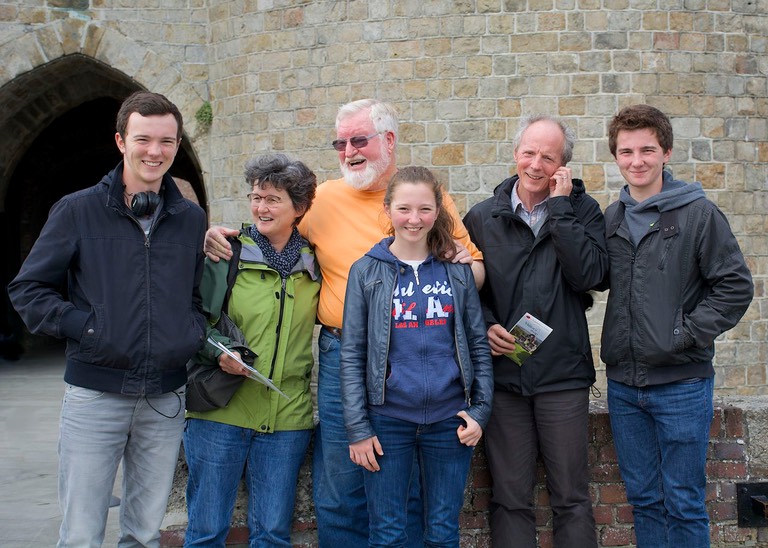
We had spent the Saturday night parked in a nice spot near Péronne, along the Canal du Nord, and we returned there for the next three days, enjoying the barges going past us and then through the nearby lock, and weathering some (at times) heavy rain. One evening, between storms we had several clear hours and a full moon. The moonlight on the canal was very special. By midnight it was raining hard again. Autumn was definitely upon us.
We had been to this canal before and knew it was a good place to get organized for going home for the winter. We made decisions about storage locations, began to sort out what to take/leave, made lists of what we needed to bring back next year, and booked tickets for Iceland for next summer.
Then we started heading for Amsterdam and our flight home on October 16. We packed away the cameras, knowing that we’d just get into trouble if we stopped to take more pictures – we already have plenty for this year. But we managed to stop each night someplace we’d visited and enjoyed at some earlier point in our travels: Tournai and Lier in Belgium, and then Vianen in Holland. All very nice spots, and good places to spend some time.
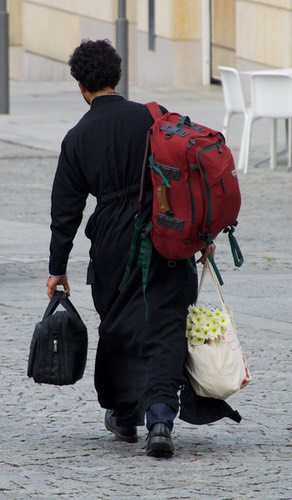
As always, there’s a scramble to avoid having to throw away food, get everything sorted and packed, and get the tanks emptied and prepared for winter. We spent our last night parked at the Tiger’s winter storage area outside Amsterdam, at a greenhouse location that is very popular among our crowd. On Thursday we made our way to the airport, and after the usual hoopla and interminable waiting in lines, boarded our flight. We paused in London for a couple of hours, and then finally landed in Houston late in the day. We were pleased to be back on our home turf – and the balmy 80 degrees wasn’t all bad, either.
We’ll be wandering the U.S. for the next several months. We’ll hope to see many of you while we’re around, and – if not -- perhaps we’ll see you back across the Pond come next May. Happy Halloween to everyone!
Rick and Kathy, missing our Tiger but settling back into Fred the Wonder Wagon, aka “The Plaza.”
Click to see more photos from northern France